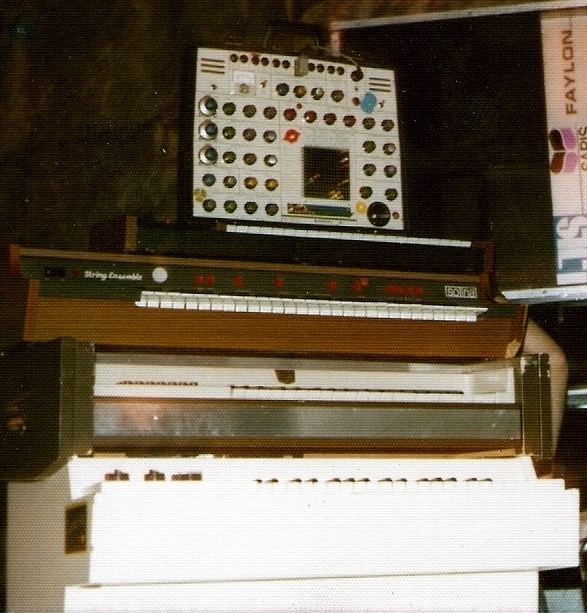 | ||
The EMS Synthi A is a portable analog synthesizer (electronic musical instrument) made by Electronic Music Studios (London) Ltd (EMS) in 1971. It uses exactly the same electronics as the VCS 3, rehoused in a Spartanite briefcase. Instead of routing signals using patch cables, as a Moog did, it uses a patch matrix with resistive pins. The 2700 ohm resistors soldered inside the pin vary in tolerance - 5% variance and later 1%. The pins have different colours: the 'red' pins have 1% tolerance and the 'white' have 5%, while the 'green' pins are attenuating pins having a resistance of 68,000 ohms.
The later Synthi AKS incorporated an early digital 256 event KS (Keyboard Sequencer) sequencer in the lid, input provided by a capacitance sensitive Buchla like keyboard .
Perhaps its most prominent use is in Pink Floyd's "On the Run" from their 1973 album The Dark Side of the Moon, as well as the introduction to Alan Parsons Project's "I Robot." Along with Klaus Schulze and Tangerine Dream, other frequent users of the instrument include Tim Blake & Miquette Giraudy of Gong, Richard Pinhas of Heldon, Merzbow, Thomas Lehn, Cor Fuhler and Alva Noto.
The Synthi A is still in production but it is an 18-month wait for a new unit with slightly different specifications to those of the original 1970s units. All versions are rare and expensive. Cost for a new unit in 2009 ranged between $7500 and $12,000 US. A KS sequencer alone sold for $3500 in 2006. Update based on various forum posts - the 18-month wait is more like 12 – 15 years and the waiting list is closed for the Synthi A as there are no more Spartanite briefcases to fit them into.
